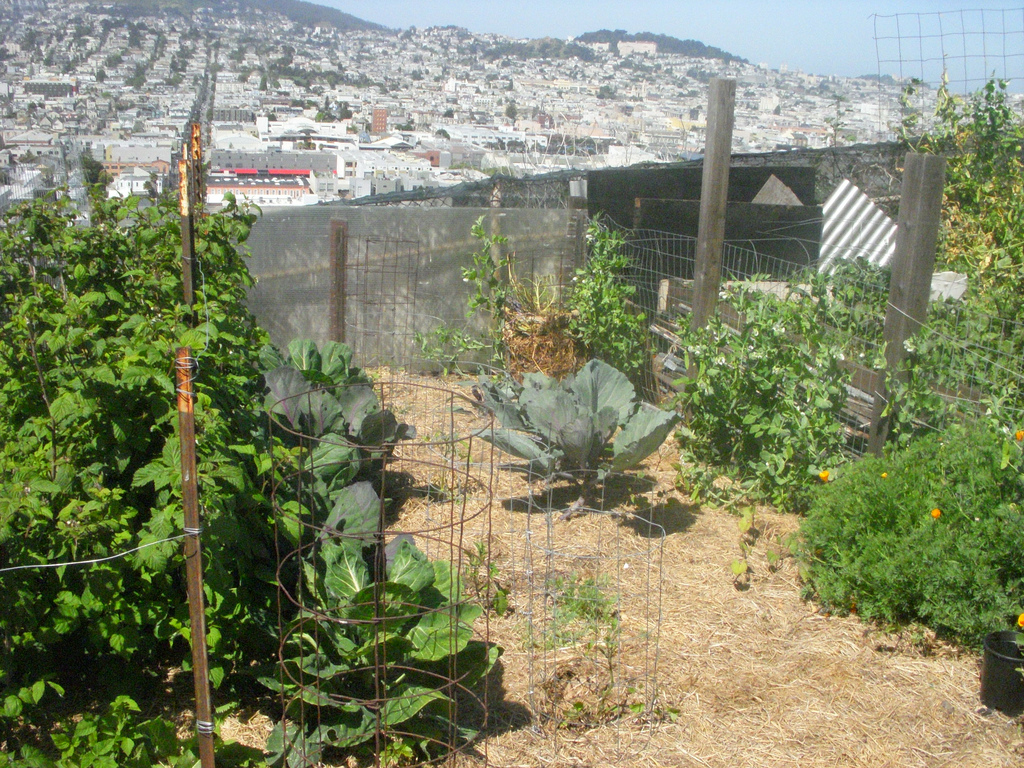
It’s almost spring here in California, which for many means it’s time to start planning this year’s garden. But when it comes to growing food in cities, planning for gardens means more than just picking out seeds. Unless city and county planning documents include policies supporting urban agriculture, community gardening and other local food-growing programs could be in jeopardy.
Many California communities are launching urban agriculture programs, converting residents into local food producers. San Jose’s community garden program is so popular that it has more than 700 people on a waiting list for a community garden plot. In Oakland, City Slicker Farms organizes low-income communities to grow and sell produce through dozens of backyard gardens and several urban farms. And at San Diego’s New Roots Community Farm, immigrant and refugee farmers use and share agrarian skills from their homelands to grow healthy food and build a new connection to the community.
By encouraging residents to grow and share their own produce, urban agriculture programs help reduce household food costs and create green spaces in urban neighborhoods. The programs also improve public safety by connecting neighbors and activating underutilized spaces.
But there’s a key step to launching and sustaining these programs: making sure planning laws and policies support them. Many communities are finding that their land use plans don’t protect (and, in some cases, actively restrict) food-growing activities. Zoning ordinances, which spell out what can be built in different areas of a community, might not explicitly define “urban agriculture,” meaning these activities can be considered illegal. (Los Angeles County, for instance, actually has a zoning code definition for “nudist camp” but not for community gardens.) Cumbersome permitting processes and the challenge of identifying potential sites are also issues that can be addressed through new local policies.
Some steps to help urban agriculture flourish in California communities:
• Look it up. Find out if your community’s zoning code and general plan addresses urban agriculture. Zoning codes and general plans are both usually available online, and you can search for terms like “community garden” and “agriculture.”
• Identify barriers and opportunities. Work with your local planning department to identify any barriers or opportunities for urban agriculture policy. Are community gardens allowed in appropriate zones? Can residents sell the food they grow? Are there regulations for soil testing and for keeping critters like bees and chickens? Innovative programs that include entrepreneur training, nutrition education, and contamination clean-up are particularly unlikely to be covered by existing policies.
• Adopt new policies. Partner with local planners and decision-makers to update local land use plans and policies. Some communities have simply amended zoning ordinances, while others have decided to invest in a comprehensive planning approach. San Francisco is currently updating its zoning code to allow commercial and non-commercial gardens in the city, and the city of Alameda is writing an urban farm and garden “master plan,” the first California city to develop a land use plan specifically on this topic.
• Cultivate public-private partnerships. Urban agriculture programs are a natural way to bring together city resources and community groups’ passion and know-how. Local groups can work with public works, planning, and parks and recreation agency staff to identify ways to promote urban agriculture. Cities could provide public land (for free or at little cost) to community garden groups, offer classes for residents on gardening or composting, or certify urban farmers to sell at farmers’ markets.
By finding out what’s legal and getting involved in the process of updating local plans and policies, community leaders and residents can help create a fertile bed for urban agriculture throughout California.
Heather Wooten is a senior planning and policy associate at Public Health Law & Policy, a nonprofit research and training center based in Oakland.
Resources on urban agriculture policy:
Establishing Land Use Protections for Community Gardens, featuring model zoning and other land use planning language to protect and expand community gardens
http://www.nplanonline.org/nplan/products/establishing-land-use-protections-community-gardens
Ground Rules: A Legal Toolkit for Community Gardens, featuring resources for establishing community gardens on privately owned vacant land
http://www.nplanonline.org/nplan/products/CommunityGardenToolkit
Photo shows a community garden in Potrero Hill, San Francisco. Photo by Rick Bradley.





